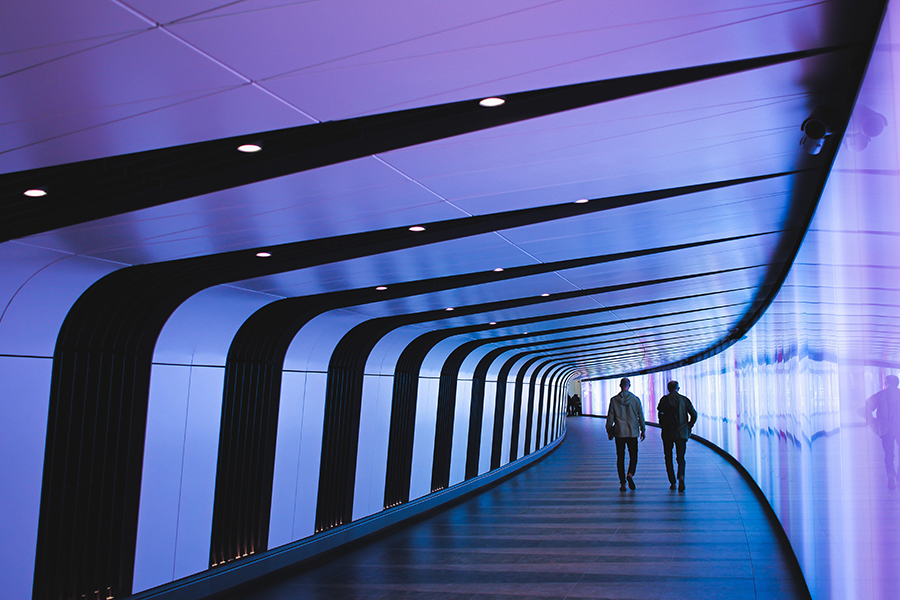Post-COVID-19, the work culture and the employee experience that we know is going to change, and change permanently. But how exactly? What are the likely shifts, and how can we prepare for them?
I work at WONGDOODY, a human experience company, and a creative firm focused on design thinking. As a managing director, I spend a lot of time (at my dining-room table in my NYC apartment) helping our big enterprise clients navigate this issue, and am already seeing some practical ways to build for the future. For now, bank as much employee confidence and connection as you can.
Since the end of the crisis is still beyond the horizon, we need to shore up the foundations of our organizations in preparation for what is next. A recent Real Leaders magazine survey of 66 C-suite executives emphasized that maintaining employee confidence and connection is foundational. All agreed on three tenets to focus on while we weather the storm:
- First, be human. Over-communicate
- Be as transparent as possible
- start planning and building the next normal
Work will come back online, and things will be different. After 9/11, we all had to adjust to a new level of business-travel paranoia and intrusive security, but it was the social trade-off for feeling relatively safe. This crisis will be no different. The post-COVID-19 work world will have new worries and new rules. Here’s how to prepare.
Expand the digital workspace: Suddenly, telling the globe to work from home (WFH) has been both daunting and illuminating. From Zoom’s lack of encryption to striking gaps in household online network access, employees have struggled to support corporate digital standards. Consider that post-crisis, the idea that the corporate fortress is the only place to work will become outdated. Companies will have to design, build, and finance more permanent and flexible systems that extend to people’s homes and can support enterprise needs. Companies without WFH options will be considered less stable and less appealing to employees because if there are any issues that prevent working on-site, the jobs at those organizations will be in jeopardy.
Also, companies will need to upgrade employee portals to be more user-friendly and synthesized, along with cultivating the ability to combine remote and on-campus experiences. Collaborative whiteboarding tools and visual team environments have to become familiar and practiced because gathering in person will be more difficult.
We are already familiar with BYOD (bring your own device) policies where we use our mobile phones at work for calls and emails. Now we will probably see companies move in the opposite direction, expecting workers to re-create work-level digital environments at home as part of business-continuity policies. There will be mandatory laptops for everyone, including support staff who usually have desktops, along with business-level internet accounts for remote WFH.
Expand your employee’s potential value: Both for them and you. It’s shocking how quickly unemployment rocketed in the U.S. Post-crisis, employees will be loyal to companies that have strong worker-retention programs that keep them sharp and valuable.
Consider that there are several active and relatively low-cost learning platforms that, depending on the curriculum, can allow you to keep a more diverse and up-to-date talent base. Expansion of digital work skills should become a priority.
When employees return, expect them to want to understand how they can be less exposed and more resilient work-wise. Giving employees a path to different futures and more in-demand roles will help you and them build a more reliable company.
Establish digital health services: The COVID-19 crisis has underlined that health is essential to an effective remote workforce. Post-crisis, you should expect that things won’t bounce back to normal and that employees will be looking to get support through the recovery. If your company doesn’t have it already, look to telemedicine services as a new normal for both physical and mental health. Again, engage employees now to see what services are relevant to them versus what might sound beneficial.
Digitize company culture: A lot of what defines work is what we experience as a group of people together in one space, one context. But without that context, what is the company culture? Post-crisis companies will need to find new tools and virtual spaces to build on the habits that they’ve started with Zoom standups and happy hours.
Let’s start the recovery now. Seize this time to survey your teams to see which virtual engagements, tools, habits, and communications have been the most meaningful to your teams, and effectively support your employer brand. Ferret out all the aspects of friction that got in peoples’ way, whether it was unintended design issues, volume issues, or people issues. Look for workarounds and shortcuts that can create a smoother flow. How can they be redesigned to be that way permanently?
The most important part is to involve all levels of the workplace now in rethinking and redesigning how work could or should work when everyone slowly comes back online in the workspace. Giving people active roles in designing the future puts their heads in a constructive and committed space. It can help you weather this challenging time and reposition your business for success.




































